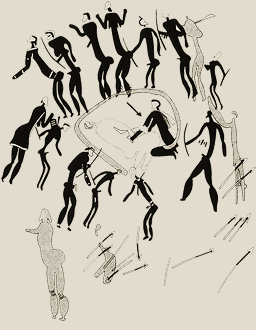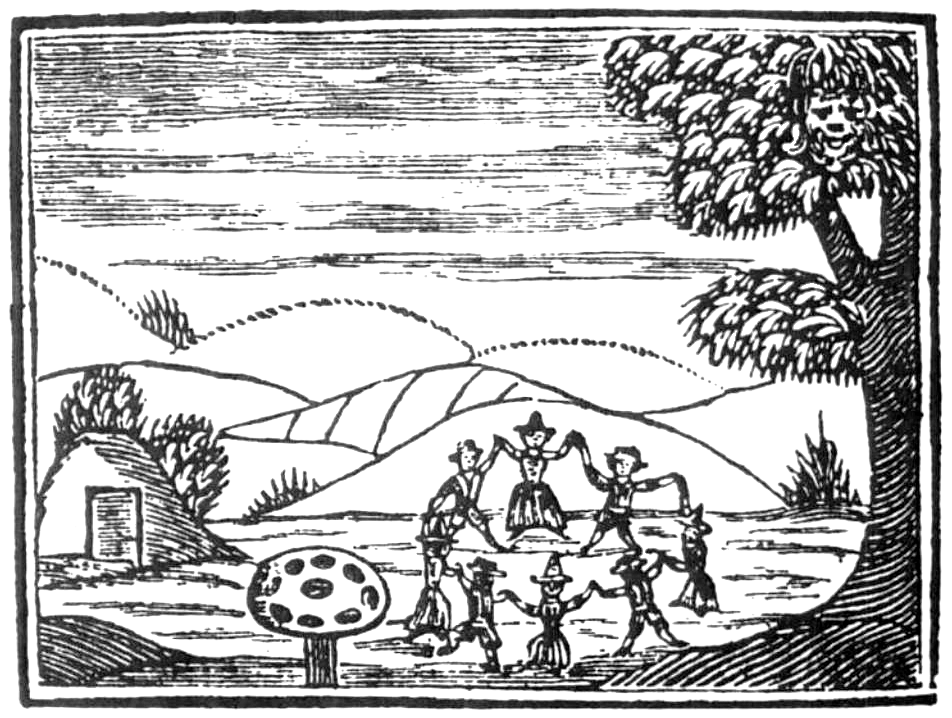The Faeries and Prehistoric Sites in Folklore and Modern Testimonies
There is a deep connection between the faeries and prehistoric sites throughout Britain, Ireland and Western Europe. This connection is recorded in the folkloric record and in modern testimonies, suggesting a metaphysical linkage that may provide a deeper understanding of the faerie phenomenon. The oldest recorded story of human interaction with the faeries at a prehistoric site comes from the 12th-century chronicler William of Newburgh. In his Historia rerum Anglicarum, William chronicles the historical timeline of events during the reigns of Stephen and Henry II, but included in the chronicle are numerous marvels; stories from local folkloric traditions, including the famous tale of The Green Children, and also discursive tangents in to subject matter such as revenants – revived corpses, sometimes described as medieval vampires. One story related by William appears to have been with him since his childhood, and involves a faerie encounter at the late-Neolithic/early-Bronze Age burial mound called Willy Howe in the East Riding of Yorkshire:
In the Yorkshire province, not too far from the place of my birth [Bridlington], a miraculous thing occurred, which I have been familiar with since my childhood. There is a village some miles away from the North Sea, near which famous waters, which are generally known as Gipsey, gush out of the ground in a number of springs… One day a rustic of the village just mentioned, went to visit one of his friends in a neighbouring village, the road to which lay near a tumulus, a road, therefore, which we may easily suppose people would not then willingly choose to pass at night. However, the love of beer, which was then even more powerful than at the present day, kept the rustic visitor until a late hour at night, and when at length he started on his way home he was all the happier for his entertainment. As he approached the tumulus he was astonished to hear merry sounds issuing from it, which betokened that it was occupied by a party who were feasting. Wondering who could have come to that lonely spot to enjoy themselves at such an hour, he approached nearer to the mound, and then, for the first time, he saw a door open in its side. Our rustic friend, who was well mounted, rode boldly up to this door, looked through it, and beheld, inside, a spacious building, brilliantly illuminated, and a large company of men and women seated at a magnificent entertainment. As he stood there staring at the door, one of the cup-bearers, seeing him, approached and offered him the cup to drink. Now it must be remarked that, according to the doctrines of faerie lore (for these were faeries), when a mere mortal approached their assemblies accidentally, the faerie-folk always offered some of the liquor they were drinking, and if it were taken, the consumer immediately lost all power of returning home, and was carried away into faerieland. But the rustic of East Yorkshire was too wise for that, for he poured the contents on the ground, and, grasping firmly the cup, started off at full gallop. The faerie feasters rushed from the tumulus, and gave chase; but the horse of the fugitive was a good and swift one, and almost by miracle he reached his village in safety, and secured his valuable prize. In the end this goblet of unknown material, unusual colour, and unfamiliar shape, was bestowed on King Henry I, and later delivered to David, King of Scotland. It was later returned to King Henry II and has remained in the royal treasury.
Willy Howe was evidently still attracting folkloric resonance in to the 20th century, when the reverend William Smith, in his 1923 publication The Ancient Springs and Streams of the East Riding of Yorkshire, recounted a tale from the indeterminate past where a man was befriended by a female faerie on the mound and promised a guinea each day if he would meet her there. He was sworn to secrecy about the contract, but eventually told some friends, after which there were no more guineas and he was punished (although Smith gives no details as to what the punishment was) by the faerie occupants (a common folklore motif).
While the Willy Howe story recorded by William of Newburgh may be the earliest correlation of the faeries to prehistoric burial mounds, there are many more examples, which while not collected until the 18th and 19th centuries, had evidently been collating through the oral tradition for many centuries. In his 1976 publication Folklore of Prehistoric Sites in Britain, the archaeologist Leslie Grinsell catalogues a considerable number of folkloric faerie encounters at prehistoric sites, most of them Bronze Age burial mounds (barrows). He even produces a distribution map, which demonstrates clusters of stories in Scotland, the Midlands and the North-West and South-West of England.
Much of the folklore recorded by Grinsell is associated with faerie music being heard at the burial mounds, usually including an allegorical lesson being learnt or a gift being given to the person who heard the tunes. For instance, a man who built his house on Mingulay Dun, in Barra, Outer Hebrides, had to move away after being persistently kept awake by the sound of faerie pipes and refrains, but stayed long enough to learn some of the tunes. Bincombe and Whitcombe in Dorset both have Music Barrows, where the sound of faerie fiddles and flutes may be heard at midday – fitting in to the common motif of experiencing the faeries being temporally constrained to a certain time of day. There are also many cautionary tales associated with faeries and barrows, such as the cup taken by a man who encountered a faerie feast on the barrow called Fairy Hill at Orrisdale on the Isle of Man: “A fairy offered the passer-by a drink from a silver cup, but he threw out the contents and the faeries disappeared, leaving the cup in his hand. He sought advice from his priest who persuaded him to present the cup to Kirk Malew Church for use at communion. It was later noticed that whenever the cup was used there, those who drank from it went mad afterwards, and so the use of the cup was abandoned.” But the faeries also have a benevolent role to play in stories surrounding their presence at prehistoric burial mounds. At Pixies’ Mound, Stogursey, Somerset, a ploughman on his way to work noticed a broken peel (a wooden shovel for baking cakes) on the barrow. He mended it and replaced it where he found it. When he returned from work the peel was gone, and in its place was a freshly baked cake, interpreted as a reward from the faeries for repairing their implement.
Grinsell records over sixty folkloric stories of this type in Britain, a number that could be multiplied several times if a modern assessment based on new research were to be carried out (Janet Bord’s 2004 book The Traveller’s Guide to Fairy Sites is the most up to date assessment, which takes the number of sites to about a hundred). The allegorical, motif-ridden overlays of all the folkloric examples should not distract from the very real correlation to an idea of the faeries and their relation to prehistoric sites – the historic tradition evidently made a connection between supernatural entities and ancient burial mounds. The deep association in many traditions of the faeries and the dead (the ancestors) may be one reason for this, and will be discussed below.
In Ireland the association is made explicit; the faeries (aes sídhe) are ‘the people of the mounds’, although many of the legends attached to these sites are more mythologically derived compared to British folklore. Prehistoric burial mounds such as Sidhe Finnachaidh, Sidh-ar-Femhin and Brí Léith are sites utilised within the Mythological Cycle of Irish stories and poetry, which link faerie royalty with prehistoric burial mounds. So, while the Irish stories contain more grand narratives than the British folklore, the point remains that there is an intimate link between the mounds and the faeries in folkloric/mythological narratives throughout Britain and Ireland.
However, Jeremy Harte makes the valid point that faerie hills are not always burial mounds and that perhaps the folkloric prerogative was to house the faeries under any prominent hill or mound for the purposes of a narrative rather than any close correlation between prehistoric burial locations and the faeries. Indeed, two of the most famous faerie hills are natural and not burial mounds. These are Doon Hill at Aberfoyle, where the Rev. Robert Kirk consorted with the faeries and met his death in the late 17th century, and the Faerie Hill of Sithean Moor on Iona, which has a long association with the faeries, and was also the location of the mysterious death of a young occultist by the name of Marie Fornario in 1929. But it remains true that most ‘mounds’ in the folkloric record are Neolithic or Bronze Age barrows, which suggests an intimate link between these sites and the faeries, and also a deep recognition of this among the people who were perpetuating the stories in the historic period.
While burial mounds seem to be the most popular faerie haunts in the folklore, there are also many records of faerie interactions at other prehistoric sites. Stone circles most commonly have the attached folkloric motif of being people petrified into stone for some misdemeanour (most often dancing on the Sabbath), but sometimes there are faerie correlations. Fingal’s Cauldron Seat is a small Neolithic stone circle on Machrie Moor, Isle of Arran, which, in the folklore, the Irish giant Finn set up to hold his cauldron. One of the stones has a perforated hole, of which the 19th-century historian John McArthur notes: “… was probably associated with some old superstition or religious ceremony, now forgotten. The hole is sufficiently large to admit the two fingers, and runs perpendicularly through the side of the column… The perforated column was believed to contain a fairy or brownie, who could only be propitiated by the pouring of milk through the hole bored in the side of the stone.” And at the Rollright stone circle in Oxfordshire there is a persistent folkloric story that the faeries emerge from a hole in a rock in the former quarry close to the King Stone to dance around the stones during full moons. It is interesting that in both these cases it is a hole in the stone that leads down to a faerie space, insinuating that (as with the burial mounds) the faeries are usually to be found underground.
Mitchell’s Fold stone circle in Shropshire is associated with an interesting piece of folklore that has the attributes of ancient oral tradition, even though it only first appears in the record during the 19th century. Leslie Grinsell summarises the legend in his booklet Mitchell’s Fold Stone Circle and its Folklore (1980): a local famine was alleviated by a faerie (in some versions faeries), who was able to generate a white cow that gave copious amounts of milk. One night a malicious witch named Mitchell milked the cow through a sieve and the displeased faeries turned her to stone and built the circle around her to prevent her from ever escaping. The folktale is even commemorated in a 19th-century pillar carving in the local church of Middleton-in-Chirbury. This particular legend certainly has the hallmarks of a magical tradition being filtered through later folklore, and may retain a folk-memory of the stone circle being used by its Neolithic builders as an interventional container for whatever negative energies they perceived in the landscape – more of which below.
There are other prehistoric stone circles, which have either been designated as faerie rings, such as Hjaltadans (Shetland), or which have specific stones known as the faerie stone, as at Hordron Edge (Derbyshire), although it is difficult to know how far these designations go back beyond the 19th century. Likewise, in Brittany there appears to be a deep connection between faerie folklore and megalithic sites, which are frequently designated as stones of the corrigans or fée (the usual Breton terms for faeries). Dee Dee Chainey discusses the collections of some of these tales by the 19th-century folklorist Paul Sébillot:
One story was collected by Sébillot in 1881 from a local gardener about a megalith sited between Saint-Didier and Marpiré (Ille-et-Vilaine), and it is shown to have strange origins: ‘The faeries took the biggest stones of the country and carried them in their aprons; then they piled them one on top of the others to build their houses.’ Another dolmen, near the wood of Rocher in Pleudihen, was similarly made by the faeries by carrying rocks in their aprons according to the local people.’ It’s interesting to note that, in contrast to the megaliths as homes for the faeries, a ‘white-haired farmer’ spoke of a menhir (peulvan) called la Pierre Fritte, saying that the fairies erected such things for those souls who had done good in their life, and whose ashes could remain ‘safe from the malice and destruction of time’ where ‘they came at night to talk with the dead.’
Three decades after Sébillot’s collection of stories the American anthropologist WY Evans Wentz also recorded the faerie beliefs of the Bretons in his 1911 publication The Fairy-Faith in Celtic Countries. Many of the stories he collected centred around the extensive landscape of Neolithic stone rows, dolmens and menhirs near the village of Carnac in southern Brittany. One description of the faeries’ activities was given to him by Marie Ezanno (then 60 years old) of Carnac village:
‘The corrigans are little dwarfs who formerly, by moonlight, used to dance in a circle on the prairies [the land containing the megalithic structures]. They sang a song the couplet of which was not understood, but only the refrain, translated in Breton: “Di Lun (Monday), Di Merh (Tuesday), Di Merhier (Wednesday).” ‘They whistled in order to assemble. Where they danced mushrooms grew; and it was necessary to maintain silence so as not to interrupt them in their dance. They were often very brutal towards a man who fell under their power, and if they had a grudge against him they would make him submit to the greatest tortures. The peasants believed strongly in the corrigans, because they thus saw them and heard them. The corrigans dressed in very coarse white linen cloth. They were mischievous spirits (espirits follets), who lived under dolmens.’
Evans-Wentz discovered that the Breton belief in faeries very much correlated them with the dead, much more so than in the other Celtic countries from which he collected testimonies. Carnac was the nexus of this, evidently due to the extensive range of prehistoric megaliths, which, while not properly understood in their archaeological context, were understood to be abodes of the ancestral dead. For the people of southern Brittany at the end of the 19th century and beginning of the 20th century, the faeries and the dead were one and the same thing.
These folkloric examples demonstrate an innate understanding in traditional communities that the faeries were often to be found inhabiting prehistoric ritual sites. Most frequently they were underneath the mounds and stones, suggesting they were part of an Otherworld marginally disconnected from consensus reality. But the stories are often overlain with allegorical storytelling and motifs, which has allowed them to become somewhat subsumed in to a whimsical past, with limited relevance to any understanding of the metaphysical reality of the connection. However, encounters with faeries at prehistoric sites are not limited to the folklore. Modern experiences are numerous, and usually take the form of straightforward testimonies, without any formulated diegesis. My own experience at West Kennet Long Barrow, Wiltshire in 1996 is described in a previous post: Some Personal Reflections on Interfacing with the Faeries. This is a somewhat similar experience to that described by Jo Hickey-Hall on her Modern Fairy Sightings podcast at the La Pouquelaye de Faldouet Neolithic passage tomb (dolmen) on Jersey. The fascinating aspect of this experience is that it was reprised by another woman at the same site. The faerie entity appeared as a small, gnome-like creature (described as playful and mischievous) that appeared briefly at the dolmen before flickering out of existence. Whilst there was no apparent message or deep interaction from the experience, both Jo and the woman suggest the encounter allowed a turning point in their lives, and that the interface was important in their understanding of the possibilities of the existence of incarnate entities. Unlike the folkloric stories, there is no storytelling overlay – it is simply an experience of a faerie-type entity at a prehistoric site.
There are also several experience reports at prehistoric sites in the Fairy Investigation Society’s census, compiled by Simon Young between 2014-17. The following is worth reproducing in full, as it captures the ethereal quality of many sightings, and the effect on the participants. It happened at the Boskednan Nine Maidens stone circle in Cornwall in the early 2000s, and is report #22 in the census:
My husband and I were having a hike in the area, near Morvah. We had parked the car and walked to the Men-an-Tol, then down to the Men Scryfa which is a standing stone dating from the early medieval period. We were going back to the track to head up to the Nine Maidens stone circle, when we saw a man running down the hill. When I say run, think of those dreams when the land flies beneath you with each step; he was moving like this over the heathy ground. He stopped and looked at us, and my husband waved. He grinned and waved back, then continued to run at this incredible pace in an easterly direction until he was out of sight. He was the same sort of height and build as a slim human, with shoulder-length hair which was the colour of haematite. It was a metallic dark grey. He wore olive green trousers and a long sleeved top, but the cut was very unusual, not like anything that would be commonly bought in a shop. It had a hand-made look to it, with an odd style. I felt a bit spooked by this appearance, and husband and I chatted about how strange he had looked whilst we reached the top of the hill and the Nine Maidens. As we reached the site, the weather began to change; from being a clear sunny day, a strong wind blew up from the west and brought with it a fair deal of cloud and fog. There was a purple/grey hue to this. We explored the circle for a few minutes, and joked about having gone through a portal. As soon as we stepped out of the circle, the wind died down, the clouds cleared, and it was a bright sunny day again. Whilst we walked back towards the car, we were talking about the strange events, and joked that we hoped the car was still there, and that seven years had not passed!
Prehistoric Faeries: Landscape, the Ancestors and Altered States of Consciousness
There is evidently a link between the faeries and prehistoric sites in Britain, Ireland and Europe. In many ways this is a direct correlation between the faeries and death in the form of the ancestors. Most (perhaps all) prehistoric sites were created as memorials for the dead. The burial mounds are the most obvious examples (even though they would have been used for other ritual purposes apart from burial), but megalithic stone circles and rows and individual standing stones were also, in part, memorials for the ancestors. The relationship between these sites and the faerie phenomenon is important, and is based on a blurring of the difference between the faeries and the dead. Evans-Wentz explicitly states that, in the Celtic countries where he collected his information, they were often understood to be one and the same thing: “The animistic character of the Celtic Legend of the Dead is apparent; and the striking likenesses constantly appearing in our evidence between the ordinary apparitional faeries and the ghosts of the dead show that there is often no essential and sometimes no distinguishable difference between these two orders of beings, nor between the world of the dead and faerieland.”
It is perhaps then not surprising that much faerie folklore and modern faerie encounters have gathered around these sites. The folklore that portrays the faeries as inhabiting the land of the dead shows them as representatives of the past and what is gone. In the same way as a memory of someone dead can be conjured up in consciousness before disappearing into the subconscious, so the faeries are able to make appearances in our collective stories (based on experiences) that attempt to understand death and its connection with life. Their somewhat wacky behaviour perhaps exemplifies our fear of the unknown — they live in an undiscovered country, and have their own customs and rules. But it’s a place that can be accessed and brought into our comprehension of reality — physically and metaphysically — so as to come to terms with death, both our own and of others.
Our prehistoric ancestors were evidently intent on marking certain parts of the landscape with megalithic and other structures for a variety of ritualistic reasons, but primarily to interface with the transcendent world of the dead. If the folklore of these sites is resonant with the faerie phenomenon, then perhaps it is a folk-memory of what the prehistoric builders of the sites were attempting to capture. It is possible that the faeries (in all their forms) are remnants of an indigenous belief-system, which have continued to manifest through time, appearing to us not only in folklore, but as a metaphysical component of reality. The prehistoric sites are like lightning rods – retaining a non-material energy of consciousness within their structures that may allow us to tap in to the same experiences as those who built them. This is not the same as the old anthropological model suggested by Evans-Wentz et al., that hypothesised the faeries are the memories of prehistoric ancestors. Rather, it is the idea that the faeries are part of a collective human consciousness, first realised thousands of years ago, and still prevalent, especially at nodal points such as burial mounds or megalithic structures.
This might be taken further by suggesting that faerie entities (whether representatives of the dead or not) exist in their own standalone non-physical reality, and are able to interact with our own physical reality when certain conditions are met. Much of the folkloric record about faerie encounters, as well as modern testimonies, infer that the participant(s) is engaged in the experience during an altered state of consciousness. This consciousness state can be induced by a variety of means, and can vary from slight tweaks in everyday perception through to dramatic changes brought about by psychedelic states. Faerie folklore often includes coded language to suggest that there is an alteration in the reality field, which allows the faeries to interface with human consciousness; likewise in modern testimonies. If this is true in historic folklore and modern encounters, then it is likely to be true for our prehistoric ancestors who were constructing the sites where so many faerie interactions have been recorded.
The shamanic cultures of the Neolithic and Bronze Age were certainly adopting various strategies to alter their state of consciousness for ritual purposes, and while there is no direct archaeological evidence for psychotropic plant/mushroom use in prehistoric Britain and Ireland, a recent study from Es Càrritx, in Menorca, using UHPLC-HRMS to examine hair strands from the Bronze Age detected the alkaloids ephedrine, atropine and scopolamine, confirming the use of psychotropic plants at this time. It is likely that British and Irish contemporaries of these Mediterranean peoples were also making use of various psychotropic plants and mushrooms, which were widely available at this time. But whatever technique was used by prehistoric people to alter their states of consciousness, the state itself is probably an important element of why they spent so much time and effort constructing megalithic structures and barrows in specific landscapes. Whilst these sites were built in reverence to the dead ancestors, it can be suggested that they were also located at nodal points – almost like landscape acupuncture – to induce encounters with representatives of the Otherworld, whether these were the dead, faeries or other forms of intelligent entities, which were not ordinarily part of physical reality. If this were the case, then perhaps the energy of these prehistoric sites resonates through time, and if we are in the appropriate state of consciousness, we too can tap into the same perceptive field, which may manifest as encounters with faerie-type entities. This in turn may alter and inform our understanding of reality and of death, much as it may have done for our prehistoric ancestors.
***
The cover image is from the television series Children of the Stones (first aired on ITV in 1977). Artist not identified.
The interaction between archaeology and folklore is only touched upon in this article, but Tina Paphitis has written a thoughtful essay titled ‘Folklore and Public Archaeology in the UK’, which investigates the interaction (and lack of interaction).
Dead but Dreaming the novel is available now.
I also have an essay in the new publication Fairy Films: Wee Folk on the Big Screen (ed. Joshua Cutchin), which is a deep-dive into the 1997 film Photographing Fairies.
***
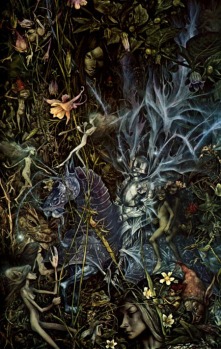
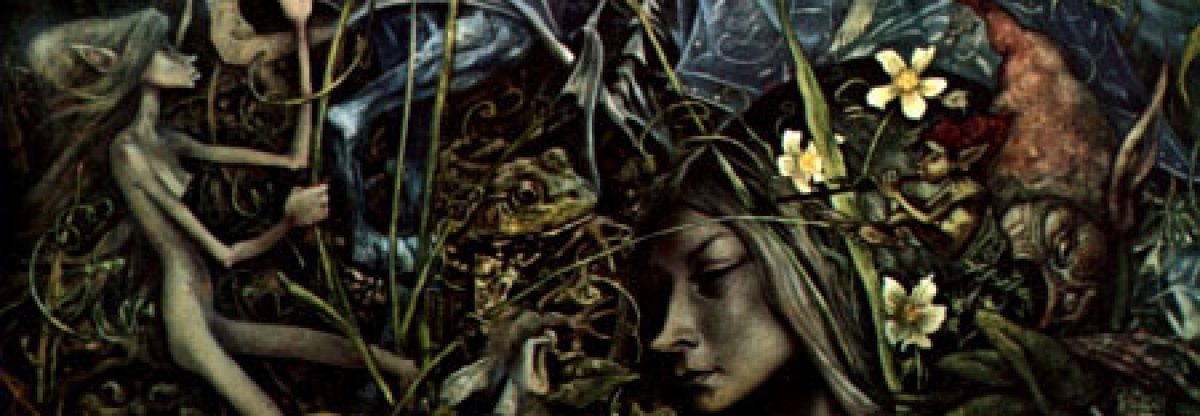

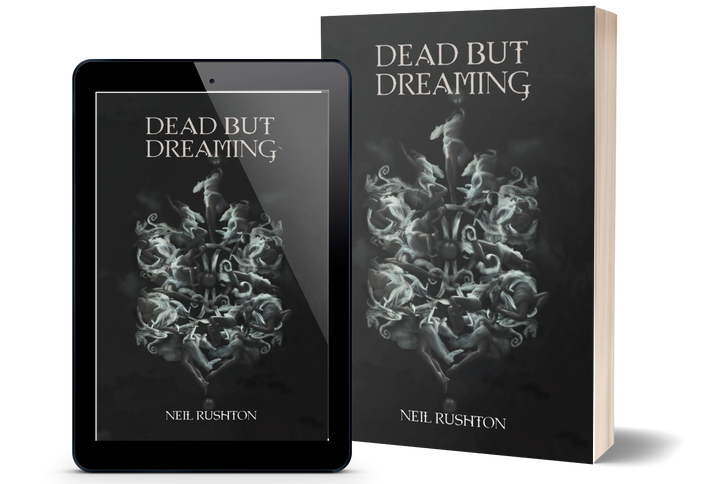




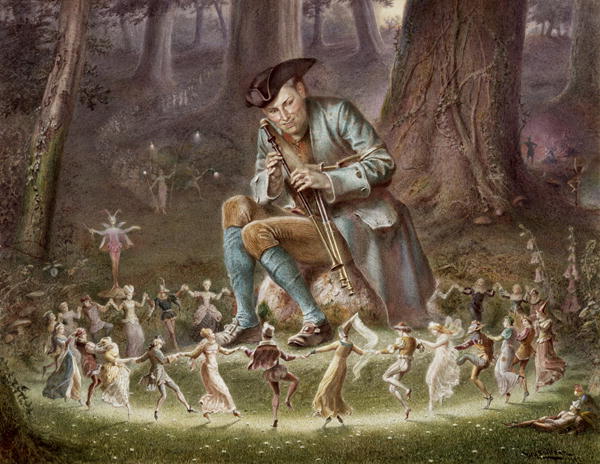 At the end of the excellent documentary
At the end of the excellent documentary 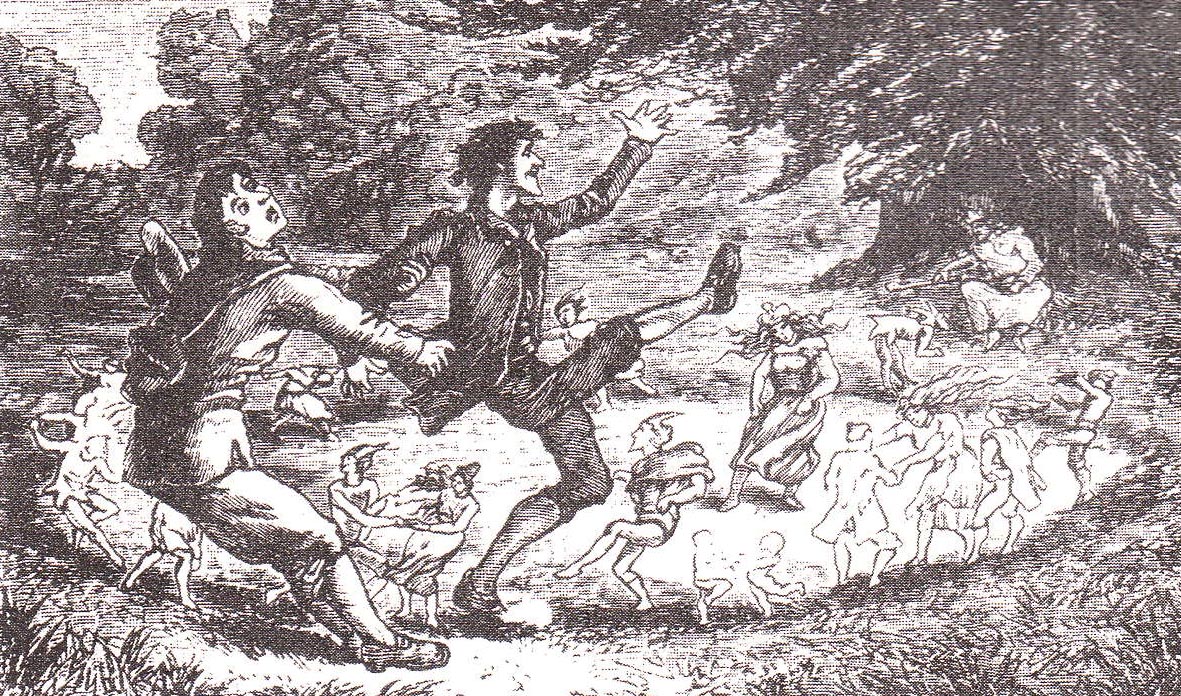
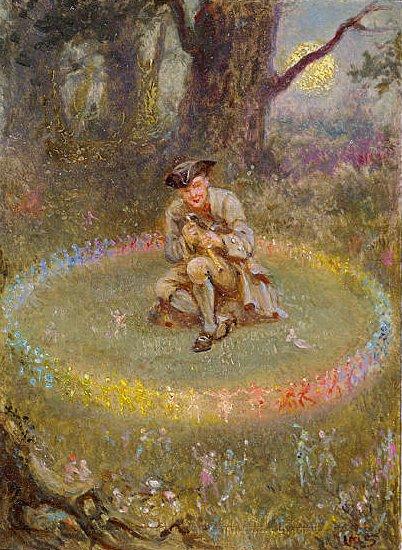 Another Welsh story tells of a shepherd playing his flute on a hillside:
Another Welsh story tells of a shepherd playing his flute on a hillside:
